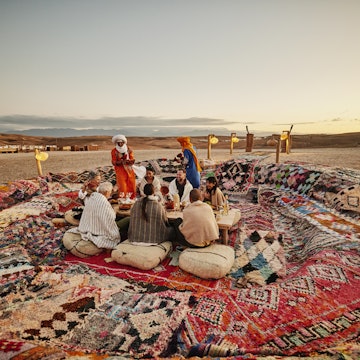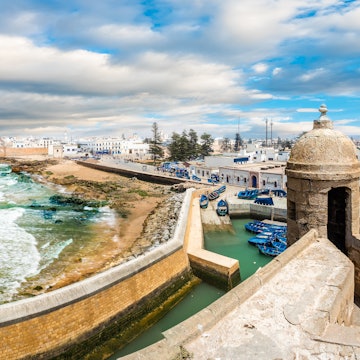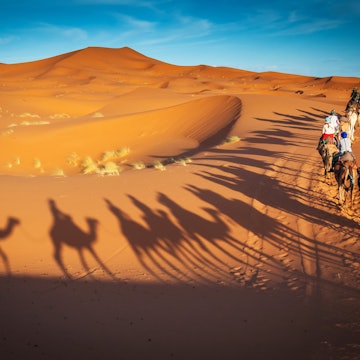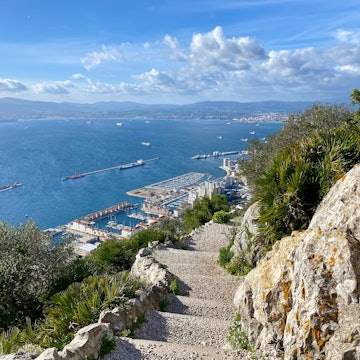
How to spend the ultimate weekend in Marrakesh, Morocco


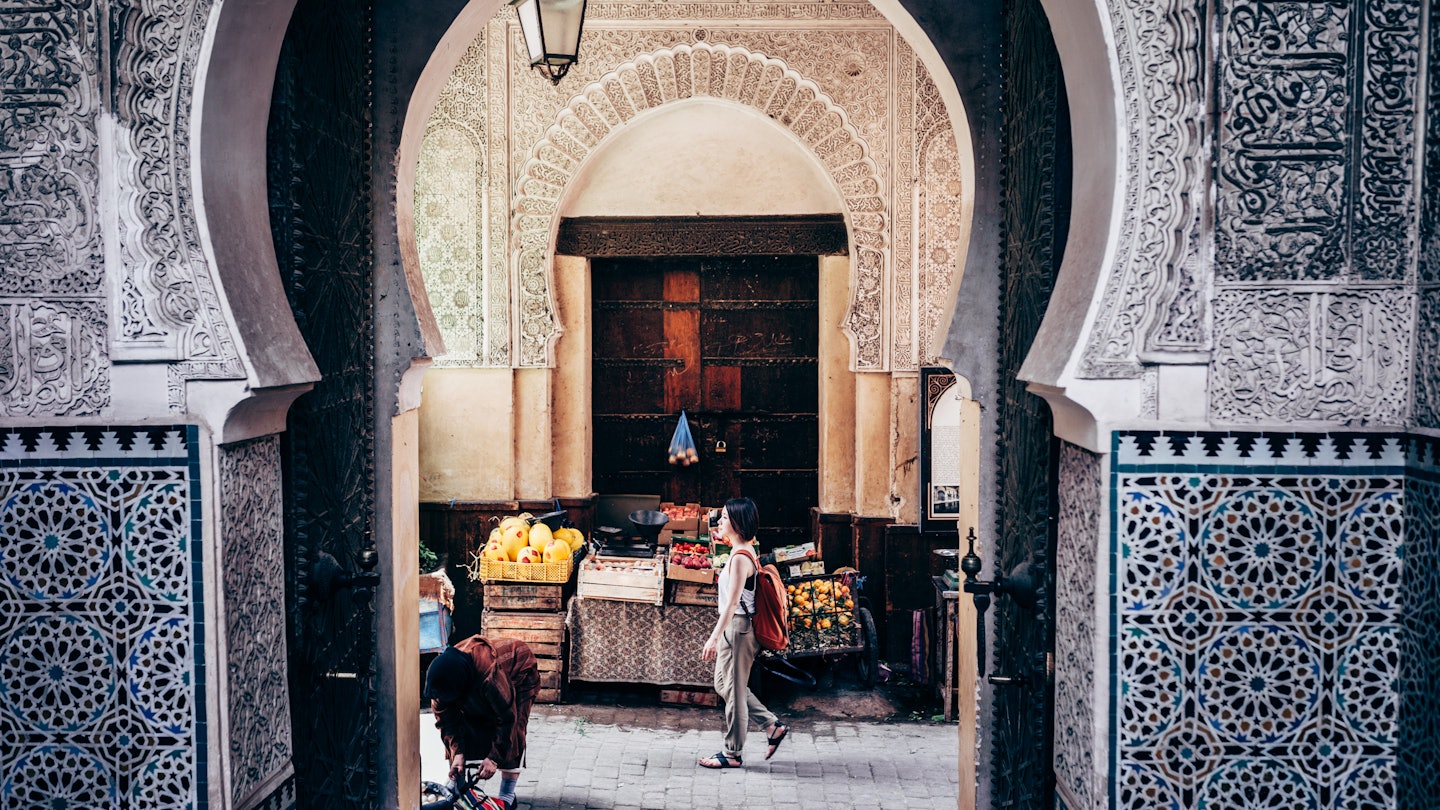
Getting lost in the medina is all part of the Marrakesh experience. Oscar Wong/Getty Images
Considering a city break to Marrakesh? On a long weekend in Morocco's "Red City," you can explore magnificent historic monuments, palaces and museums, delve into the medina’s souqs (markets), stay in a boutique riad (courtyard guesthouse) and be entranced by the magic of Djemaa El Fna – the old city's most famous square.
Beyond all that, the modern Ville Nouvelle neighborhood beckons with its galleries, gardens, cool restaurants and smart shops. It's easy to fit a lot of sightseeing and activities into just a few days in this cultured, historic city.
No matter what the season, a weekend in Marrakesh will bring you a lifetime of memorable experiences. Here's how to get the most from a weekend visit.

When to arrive: Arrive early in the day to make the most of your time. If you arrive late at night, it may be best to organize an airport transfer with your accommodation to avoid getting lost when most locals are sleeping.
How to get from the airport: Taxis into town are managed centrally at the airport; make arrangements at the desk and then meet your driver (there is a surcharge at night). It's a 20 minute drive to the Marrakesh medina. The L19 shuttle bus to the center costs less (Dh30, in cash) but it won’t get you all the way to your accommodation.
Getting around town: In the medina, the best way to get around is on foot (but keep your ears and eyes peeled for motorbikes weaving through the crowds). If you’re going further afield, hail a taxi and insist that the driver uses the meter.
Where to stay: You'll be spoiled for choice when it comes to accommodation in Marrakesh, with plenty of beautifully furnished riads and an enduring commitment to hospitality. On a budget, book into the Equity Point Hostel; at the top end, try Riad Le Clos des Arts or El Fenn.
What to pack: Dress conservatively to respect local dress codes, and bring comfortable closed-toe shoes for the cobbled streets. If you visit in summer, pack breathable, light-weight clothes, plus a hat for the sun. It gets surprisingly cold here after sundown over the winter months, so bring a coat.

Day 1
Morning
If you arrive early enough, drop your bags at your accommodation and head to Djemaa El Fna to watch the square come alive as the sun rises. Pause for freshly-squeezed orange juice or grab a warming mint tea or coffee from a local cafe.
How to spend the day
Dive right in by exploring the lively streets to the southeast of Djemaa El Fna. Wander down Rue Riad Zitoun El Jdid with its treasure-filled shops and pick up some mementos. After drooling over the carpets at the Dar Si Said museum (expected to reopen in early 2026 after repairs following the 2023 earthquake), you'll be ready for lunch at Mandala Society, a friendly spot for healthy treats in the heart of the medina.
Next, continue to the Musée de l'Art Culinaire Marocain, devoted to the national cuisine; if time allows, you can book in for a cooking class. Follow up by visiting the beautiful Bahia Palace, built by Grand Vizier Si Moussa in the 1860s. It's a masterpiece of Moroccan architecture – don't miss the graceful Cour d'Honneur courtyard. Afterward, stop for tea at Mazel on Place Ferblantiers.
Dinner
As night falls, soak up the atmosphere on Djemaa El Fna. Street entertainers create a carnival mood and you can sample delicious food at the busy food stalls. Weekends bring out the widest variety of performers: Amazigh (indigenous people of North Africa) musicians, dancers in bright satin outfits, colorfully dressed acrobats forming human pyramids, boxers taking on all contenders, comedians telling raucous jokes… Be sure to have plenty of dirham in your pocket to tip with, especially if you’re taking photographs.
After dark
Before you retire, retreat to enjoy a view of the action from the rooftop terrace at Café de France. The El Fenn and Kabana rooftop bars are also nearby for an evening cocktail with a view.

Day 2
Morning
Depending on where you’re staying, you could start your day with a yoga class in the leafy riad courtyard at Dar Anis. Alternatively, head to the family-friendly Zeitoun Café for breakfast (served all day) and superb terrace views. You might also be tempted to pop back into the Djemaa El Fna for more of that delicious orange juice.
How to spend the day
For a change of pace from the tightly packed medina, take a petit taxi to Jardin Majorelle, one of Morocco's loveliest gardens (prebook tickets online in advance for an early visit to avoid the crowds). Stroll around exquisite stands of bamboo and palms and enjoy the aesthetic vision of its founder, the French Orientalist painter, Jacques Majorelle.
Don't miss the Pierre Bergé Museum of Berber Arts, then for a serious dose of fashion, walk around the corner to the Yves Saint Laurent Museum, devoted to the French haute couture designer who restored the Jardin Majorelle.
Next, admire the Art Deco cinema and other striking buildings along Boulevard Mohamed Zerktouni as you walk to Amal Center for lunch. Dining here helps support a non-profit organization that helps disadvantaged women learn skills to achieve financial independence.
Spend the rest of the day exploring the Ville Nouvelle's superb art galleries and stylish shops. Off Rue Yougoslavie on Passage Ghandouri, Yahya Création produces superbly crafted lighting, furniture, architectural elements and art, while Matisse Art Gallery has contemporary Moroccan paintings, mixed media and sculpture.
At the end of the passage, you’ll find the private Musée d’Art et de Culture de Marrakech, with a permanent photographic exhibition, a large collection of Orientalist paintings and temporary exhibitions. Enjoy more contemporary Moroccan Art at Comptoir des Mines, displaying the work of Moroccan modern artists over three floors.
Dinner
For some innovative cooking, book a table for dinner at Farmers, where the menu sings with produce straight from a local permaculture farm. Chef Driss Aloui prepares seasonal fare served with organic and natural wines, and dining here is not to be missed.
After dark
If you're not yet ready for bed, head to Pétanque Social Club for an after hours drink. Live music and creative cocktails make for a memorable evening in this former pétanque club from the 1930s.

Day 3
Morning
Enjoy coffee and breakfast at elegant Bacha Coffee, then walk through the souqs to the impressive Ali Ben Youssef Medersa, a 14th-century Islamic school that was once the largest in North Africa.
How to spend the day
Continue to Maison de la Photographie to take in some memorable images of Morocco through the ages and grab a coffee on the rooftop. Make your way to Rahba Kedima (known as Place des Épices in French) for a mooch round the shops and stalls selling spices and traditional cures before enjoying lunch at L'Mida with a view over the rooftops.
Next, saunter through Mouassine to Musée de la Musique, devoted to the musical traditions of North Africa, followed by a visit to tranquil Le Jardin Secret. Once you're done admiring the architecture and flora here, it's time to refresh yourself with a steam and massage at Hammam de la Rose.
Dinner
It’s your last night in this incredible, vibrant city, so why not splurge on dinner at La Maison Arabe? Choose between artfully prepared international dishes or Moroccan classics, and dine by candle-light by the hotel pool or in formal salons.
After dark
Depending on your onward travel plans, you may have time to retire to the piano bar at La Maison Arabe for a late-night drink with live music, while you consider the highlights of a weekend well spent.
This article was adapted from Lonely Planet’s Morocco guidebook, published in November 2025.









